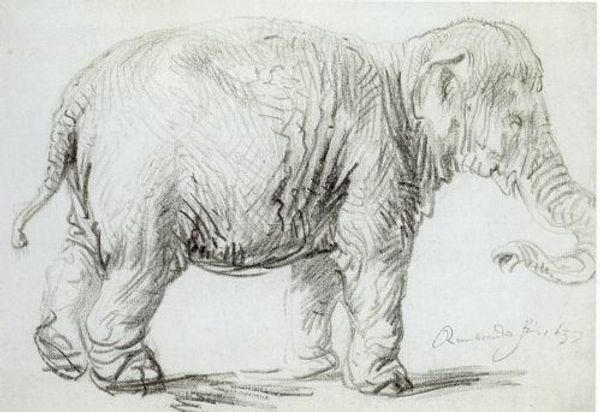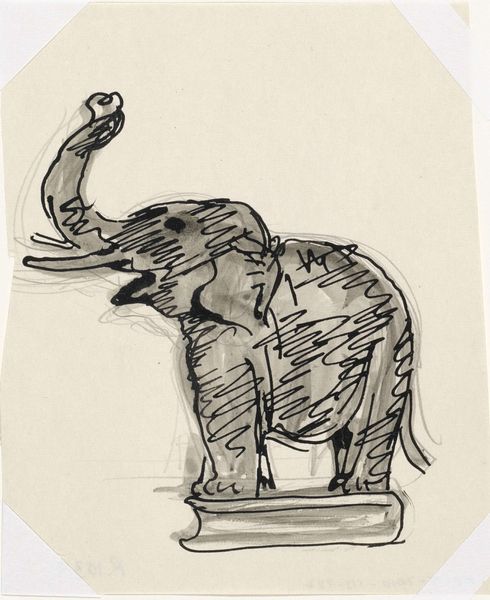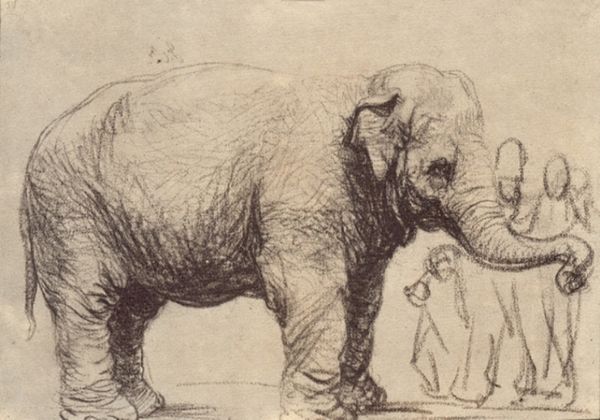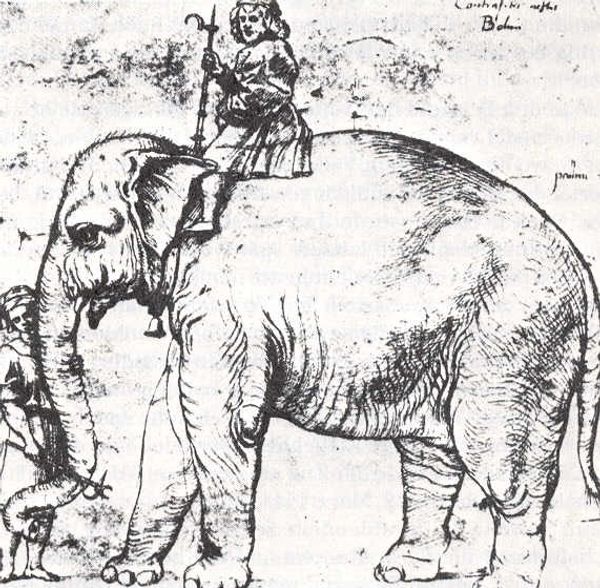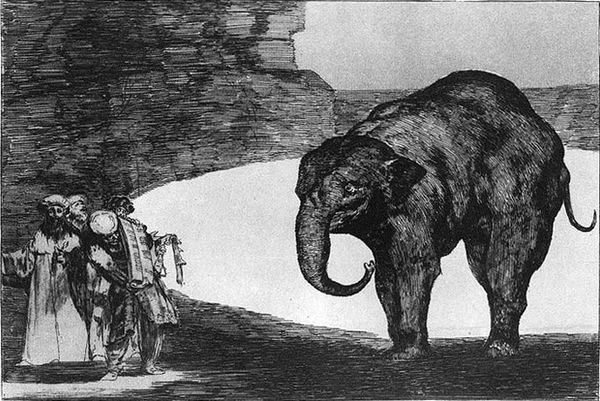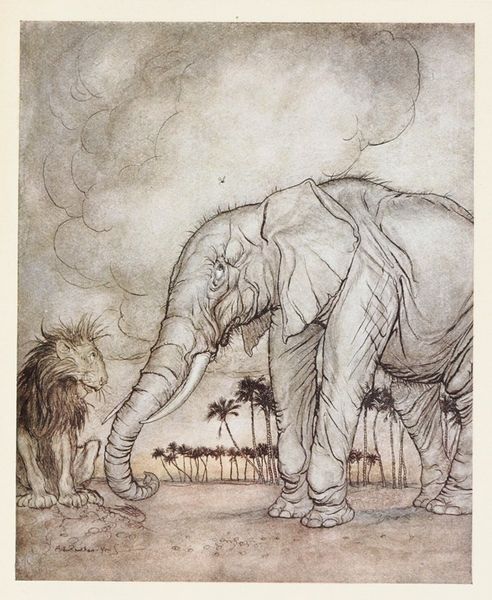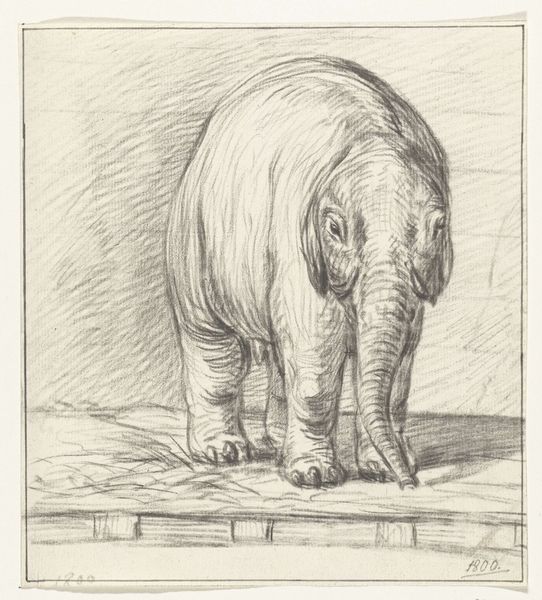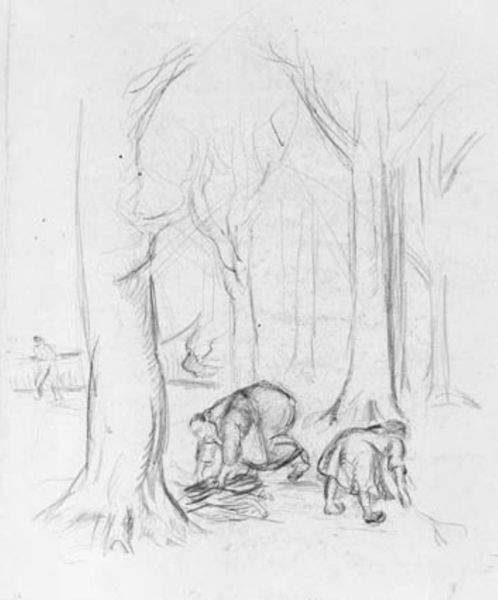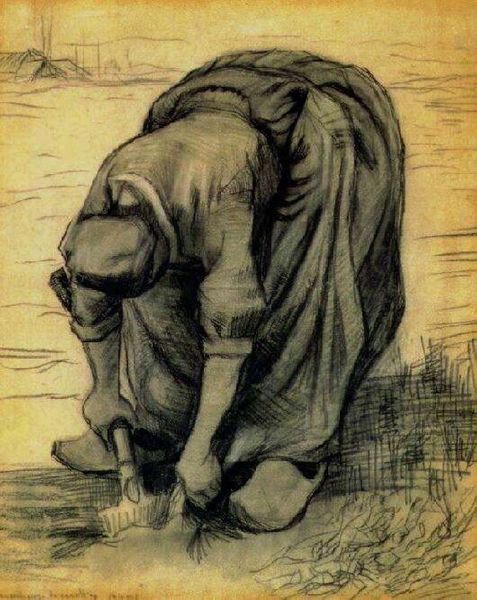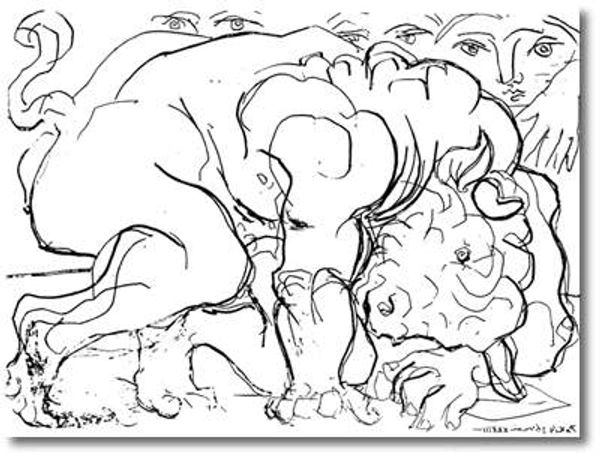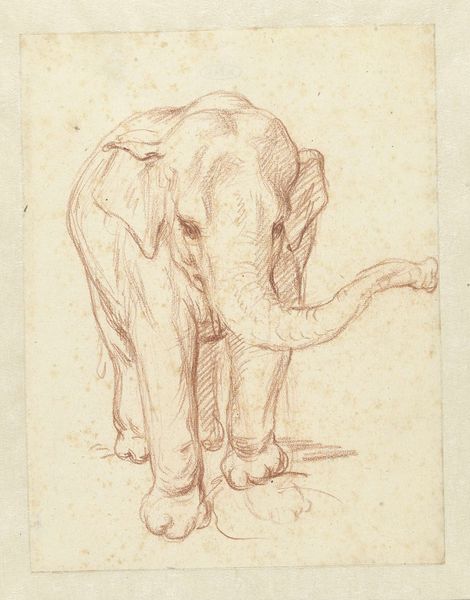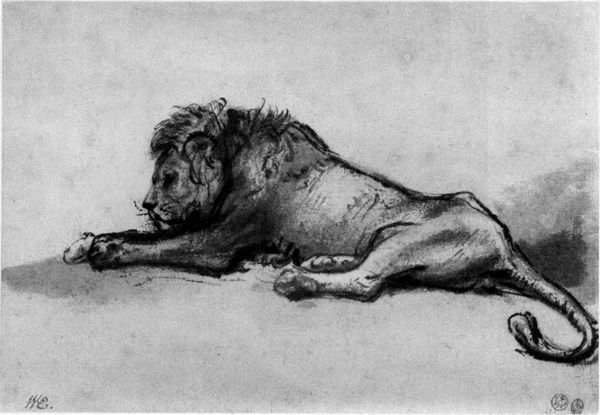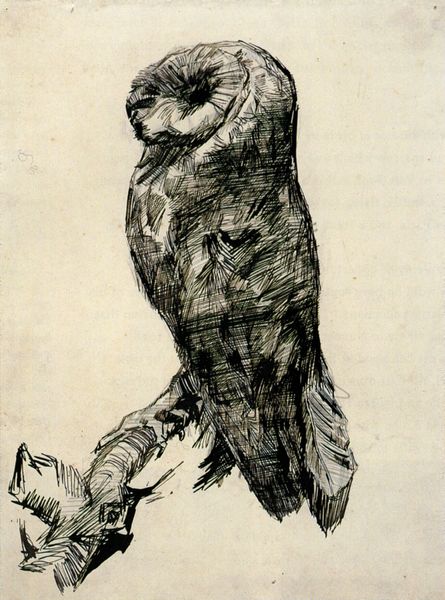
drawing, pencil
#
drawing
#
amateur sketch
#
thin stroke sketch
#
head
#
animal
#
pencil sketch
#
landscape
#
german-expressionism
#
figuration
#
idea generation sketch
#
sketchwork
#
detailed observational sketch
#
sketch
#
pen-ink sketch
#
pencil
#
expressionism
#
rough sketch
#
fantasy sketch
#
initial sketch
Copyright: Public domain
Curator: Welcome. Here we have Franz Marc's drawing "Elephant" from 1907, rendered in pencil. What are your first thoughts? Editor: Its rough texture really stands out. The sketchy, almost frantic lines give it a sense of raw, untamed power, far beyond merely representing its subject in naturalistic form. It really embodies movement, despite being static. Curator: Indeed. Notice how the lines are not just contours but create volume and shadow. The application of the medium generates dynamism, with each stroke contributing to a sense of underlying musculature and organic form. There's tension created by the seemingly unresolved quality of each stroke. Editor: Yes, and that resonates with a Materialist approach to art history. This isn’t a smooth, polished representation of animal perfection, but an intimate look at artistic labour. Every stroke seems to testify to Marc grappling with the elephant's enormity through a rather accessible material like pencil on paper. Was it a preparatory sketch, do you think, for a later, larger work? Curator: Quite possibly. Sketches allow artists to explore form freely, unrestricted by concerns for finish, while the subject, an elephant, could signify themes Marc later developed such as nature, spirituality and the innocent gaze. Its simple form contains multitudes. Editor: The use of pencil, moreover, places this artwork within a context of accessibility. Pencils are the tools of students and draughtsmen alike, it creates an object embodying both study and intent to produce accessible imagery. It undermines notions of artistic preciousness that are common within certain theoretical spaces. Curator: The German Expressionist movement often embraced such apparent roughness, eschewing academic polish. Consider it a move toward portraying internal realities through distortion and expressive mark-making. It elevates the intuitive process to being central, thus granting the work inherent depth beyond pure, imitative skill. Editor: Seeing the work through a material lens reminds us how art objects also serve to be material documents which echo human work, social conditions, and consumption cycles. That’s powerful even in this initial sketch. Curator: Absolutely. Viewing "Elephant" in these distinct yet converging manners provides a richer, more nuanced understanding of the piece and its historical importance. Editor: Agreed. Both perspectives add value, especially for contemporary appreciators and those looking at its impact on accessibility in the current environment.
Comments
No comments
Be the first to comment and join the conversation on the ultimate creative platform.
